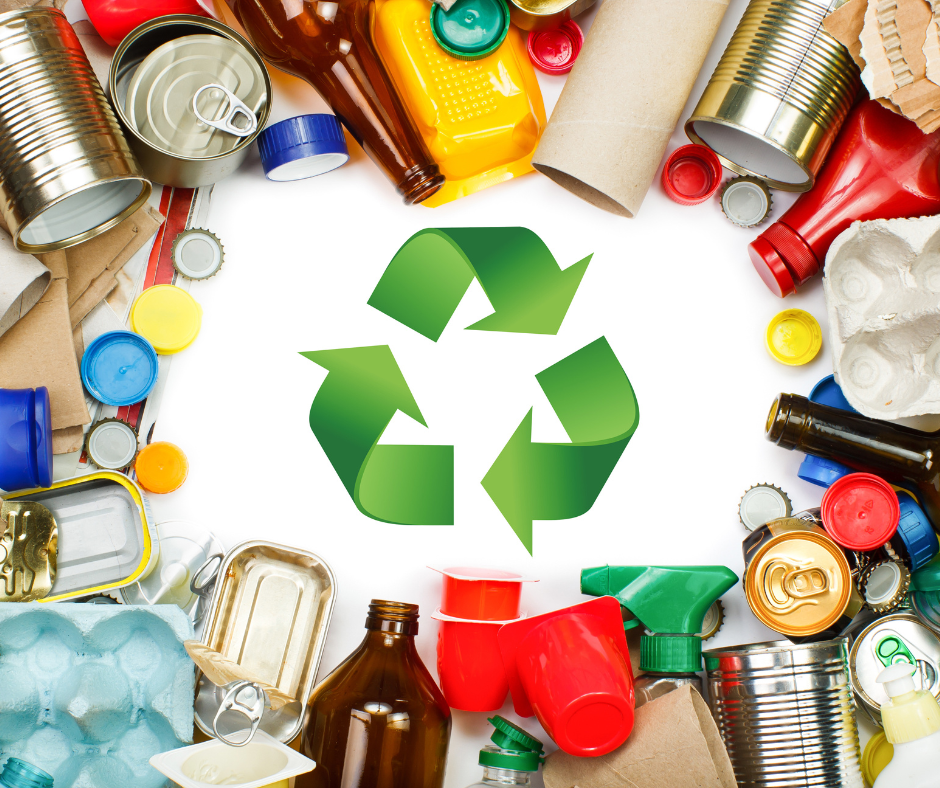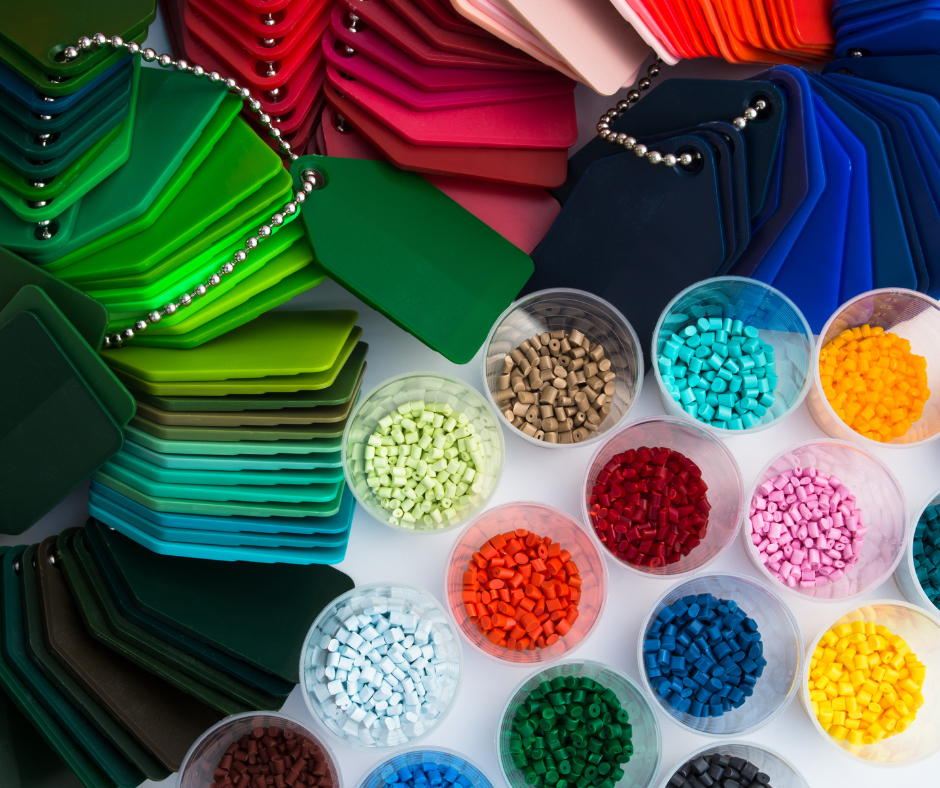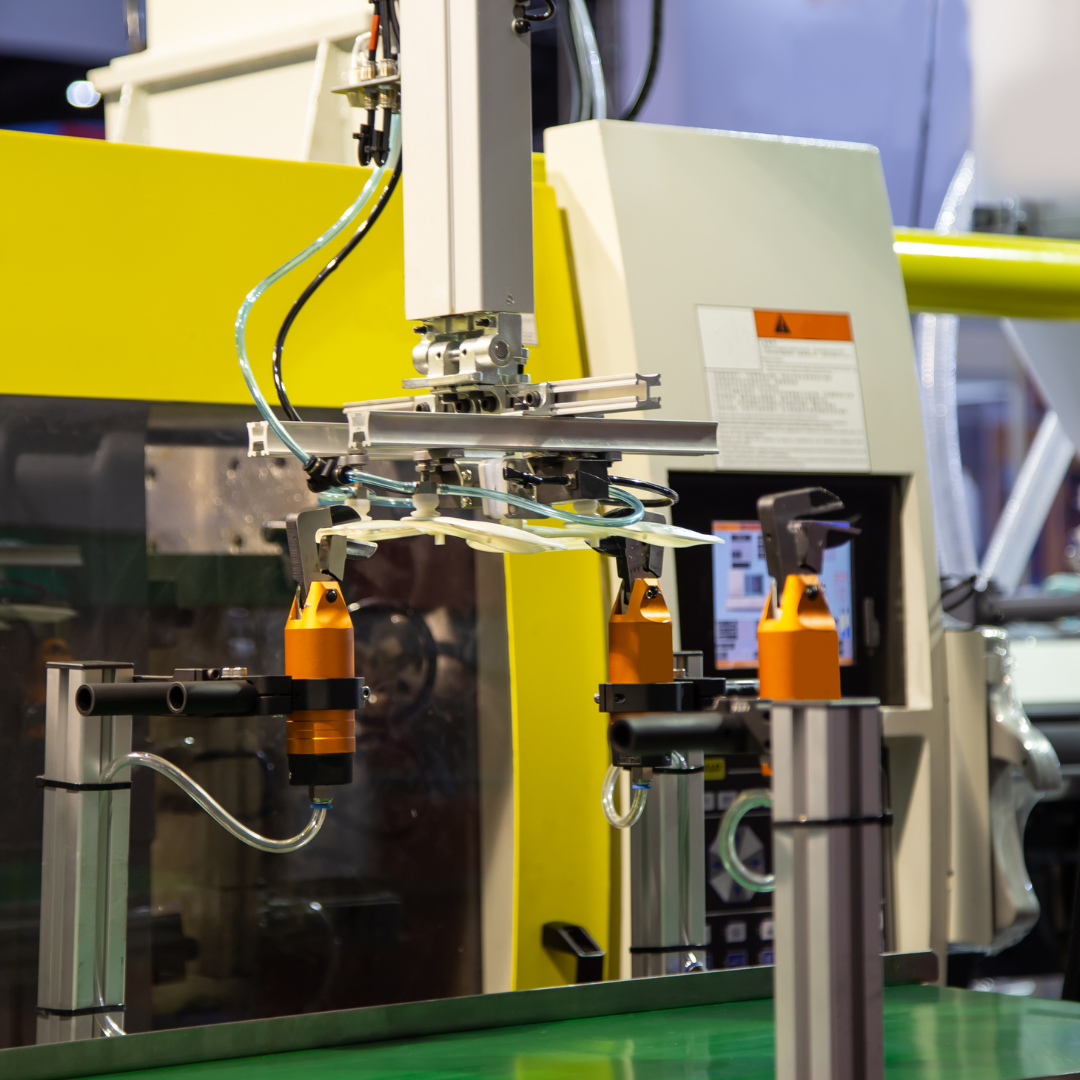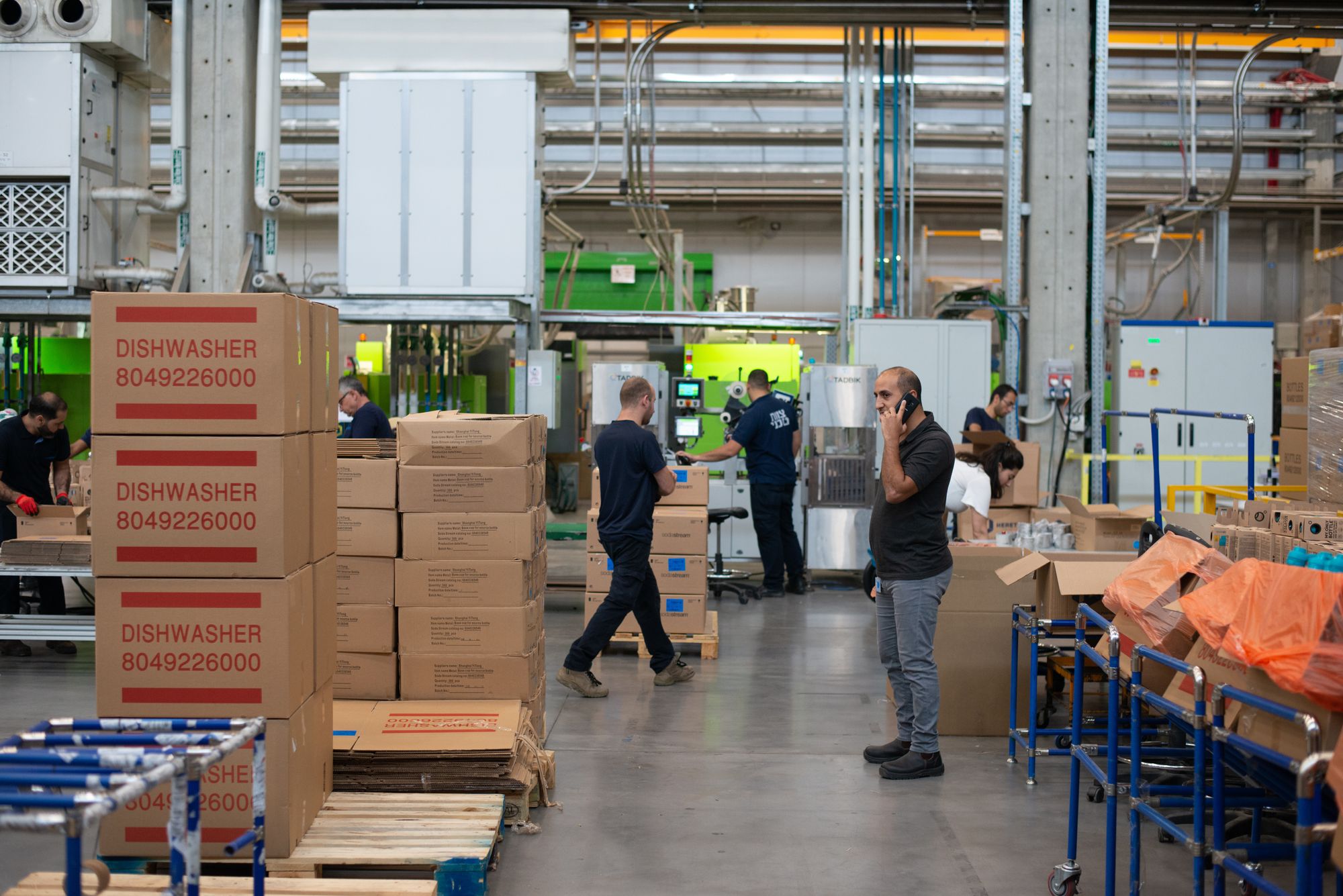Plastic production processes refer to the steps involved in manufacturing plastic products from raw materials. This can include various processes, such as polymerization, compounding, extrusion, molding, finishing, and quality control. These processes involve transforming raw materials, such as crude oil or natural gas, into plastic products that can be used for various applications, including packaging, automotive parts, construction materials, and consumer goods. The goal of plastic production processes is to create high-quality plastic products that meet specific requirements and are suitable for various applications.
Streamlining plastic production processes is essential for companies to remain competitive in the market, meet customer needs, and improve sustainability. By identifying and eliminating waste, optimizing equipment and tools, and fostering a culture of continuous improvement, companies can improve efficiency, reduce costs, and produce high-quality plastic products.
In this article, we will discuss the following:
- Importance of Streamlining Plastic Production Processes
- Tips to streamline plastic production processes
- Map out the production process
- Identify opportunities for automation
- Optimize equipment and tools
- Standardize processes
- Implement lean manufacturing principles
- Monitor and analyze performance
- Foster a culture of continuous improvement
- How can Deskera Help You?
- Conclusion
- Related Articles
Importance of Streamlining Plastic Production Processes
Streamlining plastic production processes is crucial for several reasons, including:
- Increased efficiency: Streamlining the production process can help reduce waste, minimize downtime, and increase productivity. This can help companies produce more products in less time and at a lower cost.
- Improved quality: By standardizing processes and implementing quality control measures, companies can improve the quality of their products. This can help reduce defects, scrap, and rework, and increase customer satisfaction.
- Cost savings: Streamlining the production process can help reduce costs by minimizing waste, improving efficiency, and reducing the need for excess inventory.
- Increased competitiveness: By streamlining production processes, companies can improve their competitive position in the market. This can help them respond to changing customer demands and stay ahead of competitors.
- Environmental benefits: By minimizing waste and optimizing production processes, companies can reduce their environmental impact. This can help them meet sustainability goals and comply with regulations.
Overall, streamlining plastic production processes can help companies improve efficiency, reduce costs, and increase customer satisfaction. It is essential for companies to continuously improve their production processes to remain competitive in the market and meet the changing needs of customers.
Tips to streamline plastic production processes
Streamlining plastic production processes is essential for achieving greater efficiency, reducing waste, and increasing profitability. Here are some tips to streamline plastic production processes:
Map out the production process
Mapping out the production process is an important first step in streamlining plastic production processes. This involves creating a visual representation of the entire production process, from the raw materials to the finished product. Here are the steps involved in mapping out the production process:
- Identify the starting point: Start by identifying the beginning of the production process, which could be the raw materials or the components that are needed to produce the final product.
- Break down the process: Break down the entire process into smaller steps or stages, such as molding, extrusion, assembly, or finishing.
- Identify the resources: Identify the resources, such as equipment, materials, labor, and time, needed for each step of the process.
- Map out the flow: Map out the flow of materials and products from one step to another. Use flow charts, process maps, or value stream maps to create a visual representation of the entire process.
- Identify bottlenecks and inefficiencies: Look for bottlenecks or areas of inefficiency in the process, such as waiting times, redundant steps, or delays. These are areas that can be targeted for improvement.
- Identify opportunities for automation: Look for opportunities to automate repetitive or time-consuming tasks, such as material handling or quality control.
- Standardize processes: Develop standard operating procedures (SOPs) for each step of the production process. Standardizing processes can help reduce errors and variability, improve quality, and increase efficiency.
By mapping out the production process, companies can gain a better understanding of the entire process and identify areas for improvement. This can help to reduce waste, improve quality, and increase efficiency.
Identify opportunities for automation
Identifying opportunities for automation is an important step in streamlining plastic production processes. Here are some tips for identifying opportunities for automation:
- Analyze the production process: Analyze each step of the production process to identify repetitive or time-consuming tasks that could be automated. Look for areas where human error is common or where safety could be improved with automation.
- Consult with experts: Consult with automation experts or vendors to learn about the latest technologies and how they could be used to streamline production processes. They can also help identify areas where automation can be used effectively.
- Consider return on investment: Evaluate the cost of implementing an automated solution against the potential benefits. Determine the expected return on investment (ROI) to ensure that automation is a cost-effective solution.
- Prioritize automation opportunities: Prioritize the automation opportunities based on the potential impact on the production process. Focus on areas where the most significant benefits can be achieved.
- Use collaborative robots: Consider using collaborative robots, also known as cobots, which can work alongside human workers to automate repetitive or dangerous tasks. Cobots are typically easy to program and can be quickly integrated into existing production processes.
- Consider machine learning and AI: Explore the use of machine learning and artificial intelligence (AI) to automate complex tasks, such as quality control or predictive maintenance. These technologies can help reduce errors and increase efficiency.
By identifying opportunities for automation, companies can streamline plastic production processes, reduce labor costs, improve safety, and increase efficiency.
Optimize equipment and tools
Optimizing equipment and tools is an essential step in streamlining plastic production processes. Here are some tips for optimizing equipment and tools:
- Regular maintenance: Perform regular maintenance on equipment and tools to ensure they are working at peak performance. This can help prevent unplanned downtime and extend the lifespan of equipment.
- Upgrade outdated equipment: Replace outdated equipment with newer, more efficient models. This can help reduce energy consumption, increase throughput, and improve quality.
- Optimize settings: Fine-tune the settings of equipment and tools to maximize efficiency and minimize waste. This can include adjusting temperature, pressure, or speed settings to optimize production processes.
- Monitor performance: Monitor the performance of equipment and tools to identify areas for improvement. Use real-time data to analyze performance metrics, such as downtime, cycle time, or scrap rate.
- Train employees: Provide training to employees on how to operate equipment and tools efficiently. This can help reduce errors and downtime and increase productivity.
- Use predictive maintenance: Implement predictive maintenance techniques, such as vibration analysis or oil analysis, to identify potential issues before they become critical. This can help reduce unplanned downtime and maintenance costs.
- Implement automation: Automate repetitive or time-consuming tasks, such as material handling or quality control, using robotics or other automated solutions. This can help reduce labor costs and improve efficiency.
By optimizing equipment and tools, companies can reduce maintenance costs, increase efficiency, and improve the quality of plastic production processes.
Standardize processes
Standardizing processes is a crucial step in streamlining plastic production processes. Here are some tips for standardizing processes:
- Document processes: Document each step of the production process, including the standard operating procedures (SOPs) for each step. This can help ensure that everyone follows the same process and reduce variability.
- Establish quality standards: Develop quality standards and metrics to ensure that the production process meets the desired quality level. This can include inspection criteria, acceptance limits, or defect classification.
- Communicate standards: Communicate the standards and expectations to employees, suppliers, and customers. This can help ensure that everyone understands the process and the desired outcome.
- Monitor compliance: Monitor compliance with the standards and procedures to ensure that everyone is following the same process. This can include regular audits, quality checks, or performance metrics.
- Continuously improve: Continuously improve the process by identifying areas for improvement and implementing changes. This can include feedback from employees, customers, or suppliers.
- Train employees: Train employees on the standardized processes and quality standards. This can help reduce errors and improve efficiency.
- Use visual aids: Use visual aids, such as flowcharts, diagrams, or checklists, to help employees understand and follow the standardized processes.
By standardizing processes, companies can reduce variability, improve quality, and increase efficiency. This can help reduce waste, minimize errors, and improve customer satisfaction.
Implement lean manufacturing principles
Implementing lean manufacturing principles is an effective way to streamline plastic production processes. Here are some tips for implementing lean manufacturing principles:
- Identify value: Identify the value that the production process provides to customers. This can help ensure that resources are allocated efficiently and waste is minimized.
- Map the value stream: Map the entire value stream of the production process, from raw materials to finished products. This can help identify areas of waste and inefficiency.
- Eliminate waste: Eliminate waste in the production process, such as overproduction, waiting, defects, excess inventory, overprocessing, unnecessary motion, and unused talent.
- Implement just-in-time (JIT) production: Implement JIT production, which involves producing goods only when they are needed. This can help reduce inventory, minimize waste, and improve efficiency.
- Create flow: Create a continuous flow of products through the production process by minimizing batch sizes, reducing changeover times, and optimizing equipment and tools.
- Empower employees: Empower employees to identify and solve problems in the production process. This can help improve efficiency and reduce waste.
- Implement visual management: Use visual management tools, such as kanban boards or visual work instructions, to help employees understand and follow the standardized processes.
- Continuously improve: Continuously improve the production process by identifying areas for improvement and implementing changes. This can include feedback from employees, customers, or suppliers.
By implementing lean manufacturing principles, companies can improve efficiency, reduce waste, and increase customer satisfaction. This can help reduce costs and increase profitability.
Monitor and analyze performance
Monitoring and analyzing performance is a critical step in streamlining plastic production processes. Here are some tips for monitoring and analyzing performance:
- Define metrics: Define key performance metrics, such as cycle time, throughput, downtime, scrap rate, and customer satisfaction. This can help identify areas of improvement and track progress over time.
- Collect data: Collect data on the key performance metrics using software tools, such as manufacturing execution systems (MES), data historians, or quality management systems (QMS). This can provide real-time visibility into the performance of the production process.
- Analyze data: Analyze the data to identify patterns, trends, or anomalies. This can help identify areas for improvement and make data-driven decisions.
- Use statistical process control (SPC): Use SPC techniques, such as control charts or histograms, to monitor the performance of the production process and identify deviations from the expected performance.
- Implement corrective actions: Implement corrective actions to address any deviations from the expected performance. This can include root cause analysis, process improvements, or employee training.
- Continuously improve: Continuously improve the production process by identifying areas for improvement and implementing changes. This can include feedback from employees, customers, or suppliers.
By monitoring and analyzing performance, companies can identify areas for improvement and make data-driven decisions. This can help reduce waste, improve efficiency, and increase customer satisfaction.
Foster a culture of continuous improvement
Fostering a culture of continuous improvement is essential for streamlining plastic production processes. Here are some tips for fostering a culture of continuous improvement:
- Lead by example: Leaders should model the behavior they want to see in their employees, such as embracing change, taking risks, and learning from mistakes.
- Encourage employee involvement: Encourage employees to identify areas for improvement and provide suggestions for change. This can help foster a sense of ownership and engagement in the production process.
- Empower employees: Empower employees to make decisions and take action to improve the production process. This can include giving them access to information, resources, and tools.
- Celebrate successes: Celebrate successes and recognize employees who contribute to the success of the production process. This can help reinforce the importance of continuous improvement and motivate employees.
- Provide training: Provide training and development opportunities for employees to improve their skills and knowledge. This can help them contribute more effectively to the production process.
- Use feedback: Use feedback from employees, customers, and suppliers to identify areas for improvement and implement changes.
- Continuously improve: Continuously improve the production process by identifying areas for improvement and implementing changes. This can include feedback from employees, customers, or suppliers.
By fostering a culture of continuous improvement, companies can improve efficiency, reduce waste, and increase customer satisfaction. This can help reduce costs and increase profitability.
How can Deskera Help You?
Deskera's integrated financial planning tools allow investors to better plan their investments and track their progress. It can help investors make decisions faster and more accurately.
Deskera Books can assist you in automating your accounting and mitigating business risks. Deskera makes it easier to create invoices by automating many other procedures, reducing your team's administrative workload.
Deskera also offers a suite of integrated applications to help businesses manage their financials, inventory, and operations. Furthermore, other business aspects such as HR (Deskera People), CRM (Deskera CRM), and ERP are provided by Deskera. These could be crucial and can help short sellers keep track of their businesses and make better decisions.
Conclusion
To summerize, here are 15 tips for streamlining plastic production processes:
- Map out the production process to identify areas of inefficiency.
- Implement automated systems for repetitive or time-consuming tasks.
- Regularly maintain and optimize equipment and tools.
- Develop standard operating procedures (SOPs) to reduce variability.
- Adopt lean manufacturing principles to reduce waste and increase efficiency.
- Monitor and analyze production metrics to identify areas for improvement.
- Implement quality control processes to reduce defects.
- Use real-time data to make informed decisions.
- Utilize predictive maintenance to avoid unplanned downtime.
- Establish a continuous improvement program to involve employees in process optimization.
- Improve communication and coordination among teams to minimize delays.
- Streamline the supply chain to reduce lead times and inventory levels.
- Use modular production methods to increase flexibility and scalability.
- Implement a real-time inventory management system to avoid stock-outs and overstocking.
- Consider implementing new technologies, such as 3D printing, to increase efficiency and reduce waste.
By implementing these tips, companies can optimize their plastic production processes to reduce waste, improve quality, and increase efficiency.
Related Articles











